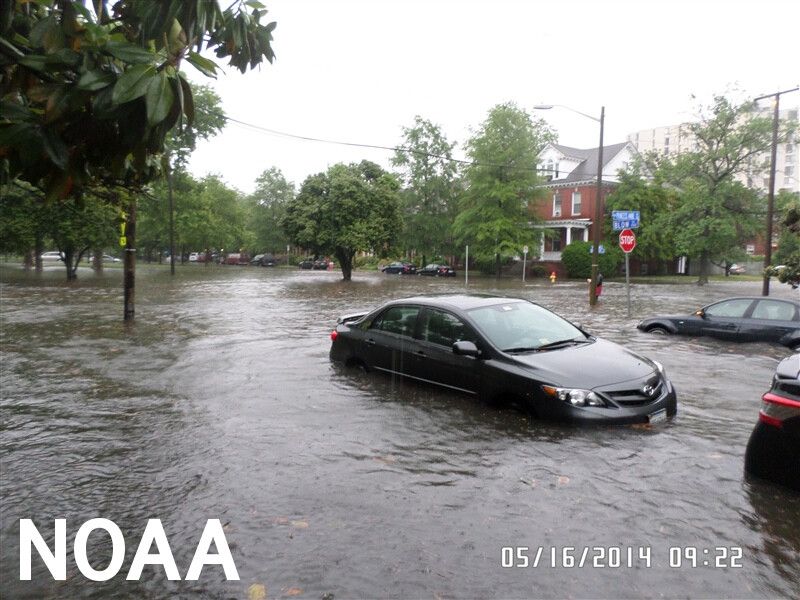In his 2017 book, The Water Will Come, journalist Jeff Goodell imagines the effects of a hurricane hitting Miami in 2037: “Most of the damage came not from the hurricane’s 175-mile-an-hour winds, but from the twenty-foot storm surge that overwhelmed the low-lying city. In South Beach, historic Art Deco buildings were swept off their foundations. Mansions on Star Island were flooded up to their cut-glass doorknobs.”
Water surged up drainage canals and flooded residential and commercial developments several miles inland. Wastewater plants were wiped out. Fresh water sources were contaminated. Hundreds of people died and billions of dollars were lost.
This is an imagined scenario, of course, but overall Goodall is right. The water is coming. In February, NOAA issued a new report on sea level rise (SLR) that projects the sea level around U.S. coasts rising about one foot between now and 2050, more in some areas (East and Gulf coasts) and less in others (West Coast, Hawaii, Alaska). This is as much in about 30 years as was measured over the previous 100 years. By 2100, NOAA predicts at least a two-foot rise even if greenhouse gas emissions are held in check. If not, we could see sea levels rise by as much as seven feet by the end of the century.
Why? Because as the planet warms, the ocean expands and ice melts. It’s happening right in front of our eyes.
So my question is: how is the maritime industry responding? Boats will continue to float, but shoreside infrastructure will need protecting. Is that being done? And how much business will SLR mitigation create for maritime companies, especially those that build seawalls and levees?
I’m writing an article on the topic for next month’s magazine, and I’d appreciate any feedback from WorkBoat readers about their businesses and the prospect of rapidly rising seas.
I can be reached by email at: [email protected]




